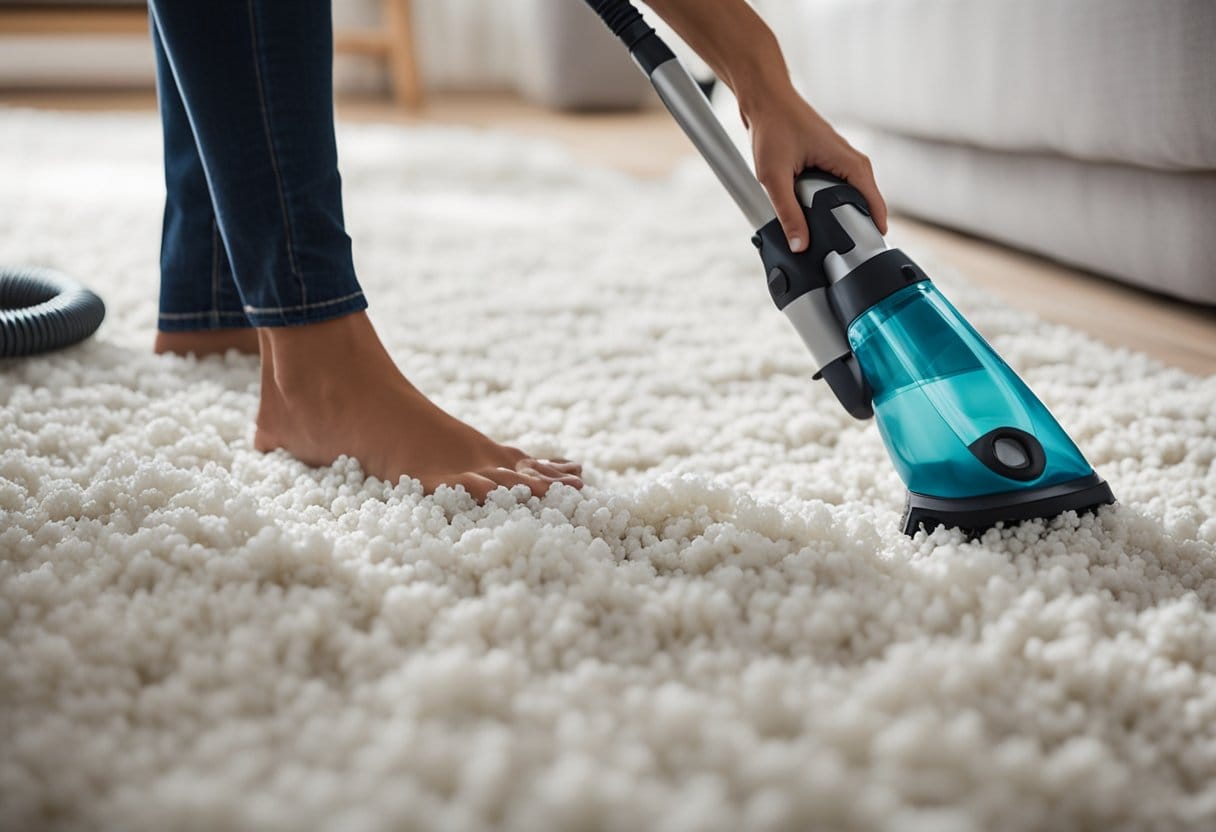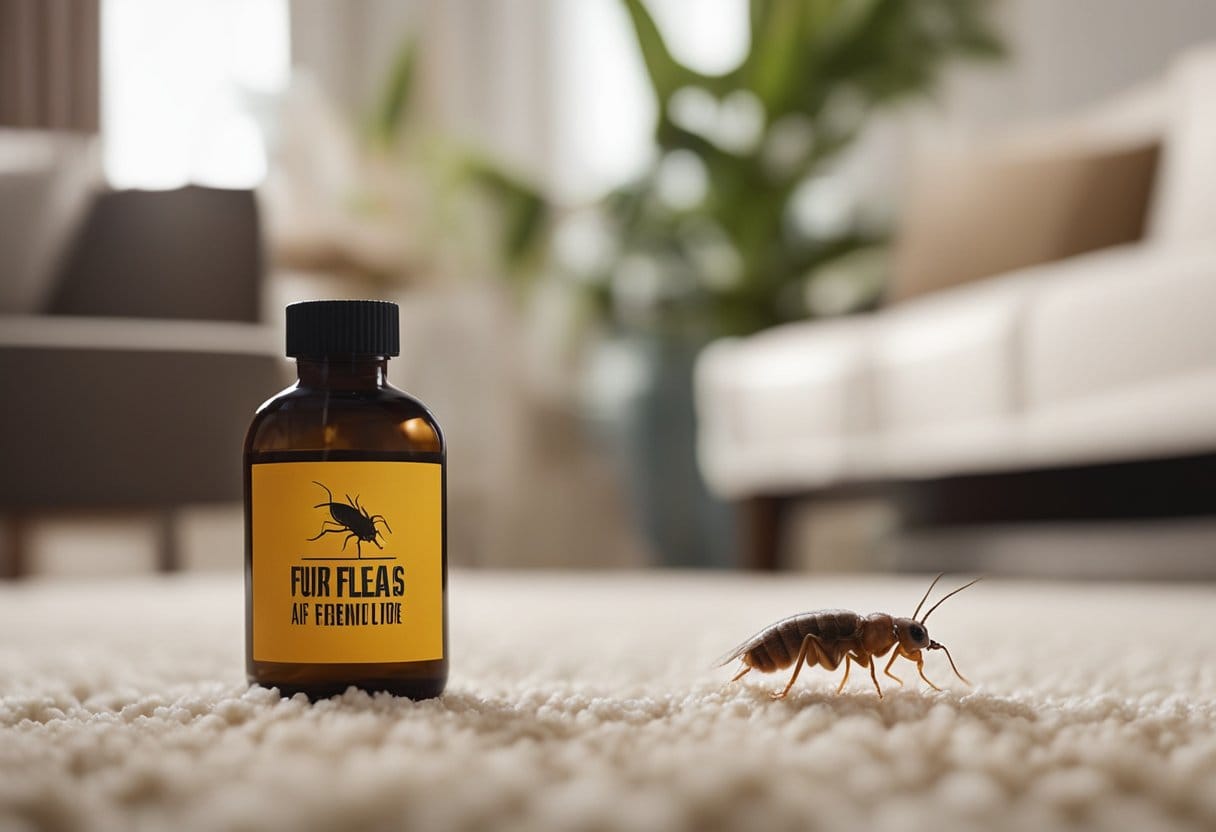Fleas are not only a nuisance; when they invade your house, it can turn into a catastrophe. These bloodsucking insects do not only make life uncomfortable for your pets but can also invade every nook and cranny of your house, yard, and carpets. So, if you are battling with a flea infestation, do not panic! Do not think that it is always chemical warfare. It is possible to get rid of fleas in the house without putting your pets and people’s safety at risk with appropriate home remedies.
This article will be “digging” into different types of treatments for fleas that can be done at home, with a special focus on persons’ traditional treatments or strategies for flea infection management and measures to keep fleas at bay for the coming period.

What Are Fleas and Why Are They a Problem?
Now that we are past the introduction of our remedies, it would be good to know the enemy that you are facing. Fleas are small, thin, wingless, bloodsucking insects and are regarded as parasites of birds and mammals, including human beings, including those of all ages. The stings of these parasites cause discomfort and annoyance to men and animals since they inject saliva into the bloodstream. Even more concerning is the fact that fleas can reproduce in a matter of days, which tends to turn a small problem into a disaster in no time.
Fleas, on the other hand, do not make things easier, as they survive through the interim stages of an egg, larva, pupa, and adult. That is why one treatment is not enough to get rid of them. You have to target the fleas at all levels so that the flea infestation can recur. However, do not fret – there are multiple safe, effective, and easy-to-administer at-home treatments that we offer to you.
Home Flea Remedies
The good news? There are many flea remedies that you can do even in the comfort of your home. Let us break them down:
Vacuuming: One of the Best Remedies Against Fleas
It might sound too good to be true but vacuuming is one of the most effective strategies to cope with fleas in the house. Carpets, upholstery, and even the cracks in your wooden floorboards may be where flea eggs, larvae, and pupae have taken shelter. By regular vacuuming fleas are prevented from reaching maturity and infesting areas beyond that which is usually occupied.
- Tip: Pay extra attention to places such as your pet’s resting areas and ponchos in high-traffic areas. When emptying vacuum bags, it is best to dispose of the bags on the lawn as you want to keep the fleas out of your house.
Diatomaceous Earth (DE)
Diatomaceous earth contains the remains of small marine life that are ground into a fine powder. It is harmless to humanity and even pets, but not so for fleas. The DE kills fleas by removing all the moisture from them and eventually killing them. It is very simple: apply a thin coat of food-grade DE on the carpets, pet beds, or any other area troubled with fleas.
- How to Use It:
- Make a fine chalk/cream application of DE and apply it to areas of concern.
- It is made to stay on for 48 hours.
- Be sure to do a thorough vacuuming of the area afterward to remove dead flea remains plus the powder used.
Do It Yourself Flea Trap
Are you trying to monitor or catch adult fleas? A simple flea trap should do just fine. Making such a trap is pretty quick and simple.
- Ingredients:
- A shallow dish (like a pie plate)
- Warm water
- Dish soap
- Instructions:
Take a shallow dish or an insect bowl, fill it with warm water, and add a drop or two of dish soap.
- Set the dish in areas where fleas tend to harbor (for example, beneath the place where the pets sleep).
- At night, place a small source of light (like a table lamp) near the dish to attract fleas.
- The fleas should jump towards the light and will end up in the soapy water, where they will drown.

Natural Flea Repellents: Essential Oils
Natural flea repellents include some other types of essential oils. However, there is a caution that not all essential oils are pet-safe, especially for cats. As for the dogs, lavender, cedarwood, and eucalyptus oils can be used dominantly as flea repellers.
- Flea-Repelling Spray Recipe:
- Pour in water in a spray bottle and add a few drops of lavender or cedarwood essential oil.
- Spray generously in every corner of the house, giving the most attention to the areas where your pets spend most of their time.
- If you are using the spray for pets, spray on their bedding or collar only, and do not spray on the skin without the consent of your vet.
A Mixture of Baking Soda and Salt
A less expensive flea treatment can do so with the help of sodium bicarbonate which is also known as baking soda and salt. These two components help to dry fleas and their eggs.
- Instructions:
- Mop carpets and carpets with equal quantity, mix dehydrated baking soda and salt and sprinkle it over loose upholstery and carpets.
- Wait for a minimum of 24 to 48 hours.
- Make sure to vacuum the mixture along with all lobster eggs and hatchlings deep in the fabric.

Flea Treatments for Your Pets
Fleas always make their way into every household through the pets, so it becomes important to flea your pets, too, as part of the flea removal exercise.
Apple Cider Vinegar Rinse
Apple cider vinegar has flea repellent as well as cooling properties for your pet’s skin. Although it will not eliminate fleas, the vinegar’s acidity makes your pet’s fur less attractive to insects.
- How to Use It:
- One part apple cider vinegar, one part water.
- After the pet has had a bath, pour this mixture over them, but avoid their eyes.
- This can be done once or twice a week until the fleas are a thing of the past.
Lemon Flea Spray
Another natural ingredient that will be beneficial in warding off fleas is lemons. This lemon based spray is also safe on dogs and so can help in battling fleas.
- Recipe:
- Cut a lemon and boil it in water, then strain the next day and place the liquid in a pump spray.
- Spray a minimum amount on the dog’s fur and their bedding.
- Be cautious with cats, as citrus can be harmful to them.
Regular Grooming and Flea Combing
Using a flea comb on pets now and then is another excellent flea preventive measure. Flea combs are equipped with densely arranged teeth that prevent and facilitate sucking of the adult fleas out of the pet’s furry costume.
- Tip: After each stroke of the comb, dip it in soapy water to trap the fleas you have combed out.

Ways to Stop Fleas in Your House
Once you have successfully treated the fleas, the most difficult part comes – prevention. Here are some long-term measures to keep your home free of fleas:
Clean the Pet’s Bedding Regularly
Flea fleas are there, especially in carpets or any other soft material available in the house. Hot wash your pet’s bedding every week to help kill any eggs or larvae that may be hiding within.
Take Care of the Yard
Fleas may also come from your yard, and this is most likely the case if you have pets and/or you live in a flea-infested region. Keep your grass short, clear leaf litter and use plants such as rosemary, lavender, or eucalyptus in your garden as semafor to discourage flees.
Natural Flea Collars
A simple and non-chemical flea treatment is an all-natural flea collar. One may take a piece of collar and soak it in a collar and essential oils such as lavender, cedarwood, and eucalyptus and let it dry. Wrap the collar to your dog or use it to a crane.
Regular Hair Cleaning
Of course, we have to bring this up again- vacuuming. It must be emphasized! Even when you feel that you have exterminated fleas in your house, you need to keep on doing some more vacuuming to eliminate the possibility of newer flea eggs or larvae that may have been overlooked.
A combination of several home treatments does wonders against fleas. Regular cleaning and maintenance of the house, along with the natural methods and the pet care habits you have taught, will keep the house flea-free, sans the chemical sprays. Remember, the important thing is never to give up. Fast forward many months down the line, and if you consistently treat your home and your pets while also actively preventing the return of fleas, you will put an end to where fleas reproduce and habit.
So, close the vacuum, fill it with dust, and close your trap to capture as Many bankrupt ants as possible – those no sooner multifactorial cockroaches call you!
FAQs
- Is it safe to use essential oils on my pet to get rid of fleas?
- Indeed, some oils can repel fleas. However, caution is very important. Mix essential oils with water or carrier oil for use, and don’t use on cats unless your veterinarian has approved since many oils can be toxic for them.
- How often must I vacuum my apartment once I have a flea infestation problem?
- While infestation is a problem, tackle the problem with the approach of vacuuming once daily and cleaning areas that are most affected by usage, which are high traffic areas, pet bedding, and upholstered furniture.
- What’s the verdict when it comes to flea traps – do they actually work?
- Yes, flea traps do help you in assessing if there are fleas in your house or not and also in capturing the grown fleas, however, they will not address the issues of eggs and larvae.